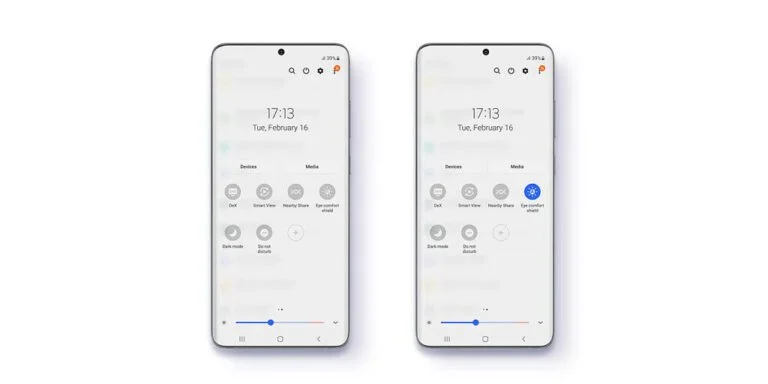I’ve been reviewing smartphones long before Google entered the arena with the original Google Pixel five years ago. (Think Palm Treo). And the Google Pixel 6 represents the company’s first flagship that could actually let Samsung look over its shoulder.
Make no mistake. Google’s market share is hungry compared to Samsung, and the company’s year-over-year growth was -7% in the US, according to Counterpoint Research. Meanwhile, the OnePlus rose 400% and Samsung 17%.
But when you look at what the Google Pixel 6 promises – and I mean promises as Google has only teased the most important features so far – there are plenty of reasons to believe that Google could finally breakthrough as the best Android phone in the world. that from the galaxy.
Google Pixel 6: The Difference In Tensor
The Tentpole Pixel 6 feature is clearly Google’s Tensor SoC designed to take AI and machine learning on phones to the next level. This isn’t an entirely new venture for Google as it has redefined the camera phone with its computational photography efforts on the flagship Google Pixel 4.
Google will be able to do a lot more with computational photography because it uses its own silicon and gives up Qualcomm.
The most notable demo Google gave to some reporters about the potential of the tensor chip was the photo of a moving toddler. Samsung Galaxy phones and the iPhone struggle in these situations, but the Pixel 6 is smart enough to take an extra exposure from its ultra-wide-angle camera and make some post-processing corrections. The result: a shaping image with a face that is not blurred.
The tensor chip also allows Google to apply its computational photography magic to videos, such as when shooting sunsets. This type of setup is particularly challenging for even the best camera phones, so I’m excited to see what the Pixel 6 can do here.
“The tensor chip is perhaps the most interesting thing about the Pixel 6,” said Ramon Llamas, IDC’s research director. “And because Google was involved in the design, Google can make its course a little clearer and tighter than relying on generations of other SoCs to power other phones.”
The Tensor SoC has many uses outside of the camera. For example, while you’re dictating, you’ll see instant speech-to-text on your phone, while editing text with your thumbs in no time. And the Pixel 6 is also smart enough to offer live captions for videos you record and even offer live translation. I’m sure this is just the surface of what Tensor can do and we’ll learn a lot more when the phone officially launches.
For Google, Tensor is its chance to stand out in an Android mobile area that has become a bit old-fashioned in recent years. But unlike the Pixel 5, Google is aiming for a premium price this time.
“Once you invest in your own silicon, it only makes sense to target the high end of the market where you can get some of that R&D back,” said Avi Greengart, founder of Techsponential.
Google Pixel 6: A Truly “New” Design
While it’s not that important, I’m also encouraged by the fact that Google went back to the drawing board with the design of the Pixel 6. It has a higher-quality glass body and a prominent camera bar that runs across the top, as well as a wide range of two-tone color options. It actually looks “new”.
At a time when buyers are used to seeing the same old panels from Samsung and others, the Pixel 6 looks like a breath of fresh air. However, Google needs to back these looks with the performance and battery life users expect. So far, the company has only promised “all-day” endurance.
The Google Pixel 6 has a 6.4-inch 90Hz display with dual cameras on the back, and the Pixel 6 Pro has a 6.7-inch 120Hz panel with a 4x optical zoom. This means that Google should have direct competitors to the Samsung Galaxy S21 and Galaxy S21 Ultra.
Meanwhile, Samsung is reportedly preparing two new flagship phones with the Galaxy Z Fold 3 and Galaxy Z Flip 3, which will be unveiled on August 11, with a price cut that will make the Pixel 6 more like the mainstream option under the new Android this fall. -Flagships look like.
Pixel 6 vs Galaxy S21: An opening for Google
Of course, Samsung still has the Galaxy S21 series and the great Galaxy S21 Ultra with its powerful zoom camera. But consumers just don’t seem to have responded very well to these phones.
It’s important to have something at the top to compete with Samsung and Apple.
In fact, the Korean publication Business Post reports that in the first six months, sales of the Galaxy S21 have fallen by 20% compared to the Galaxy S20 and by 47% compared to the Galaxy S10.
Samsung has also launched the rumored Galaxy S22, which could offer a new RGBW camera sensor along with a powerful new Exynos chip with AMD graphics. But that is not expected until early 2022.
And it seems that Google is trying to make the most of that narrow gap. “We are ready to invest heavily in marketing and want to grow,” Google hardware chief Rick Osterloh said in an interview with The Verge. But can Google really compete with Samsung?
“Samsung is the £800 gorilla and it will be hard to replace given the legions of users. Still, it’s important to have something at the top to compete with Samsung and Apple,” said Lamas.
While Google has a very steep hill to climb to overtake Samsung in terms of sales, the Pixel 6 could at least change the discussion about who’s making the best Android phone this fall.





